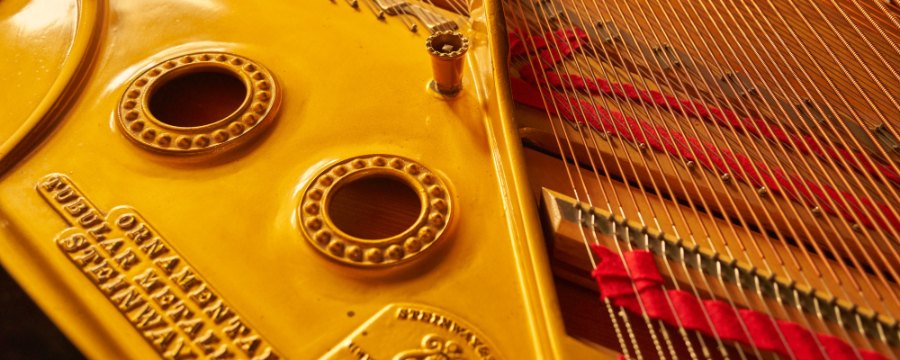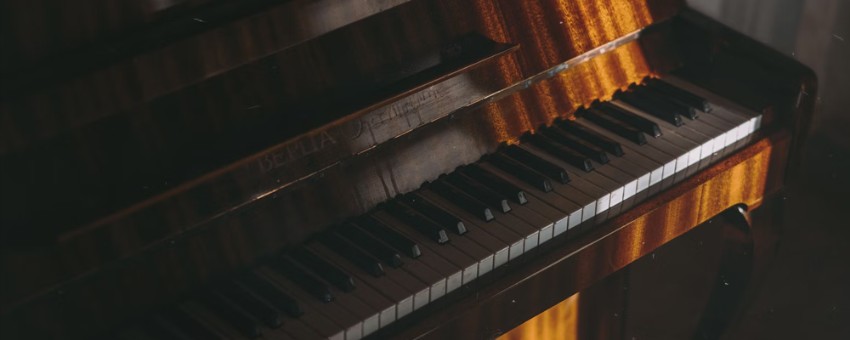The piano is one of the most recognised and popular instruments globally, with its invention changing the face of music. The versatile instrument can be used to play everything from classical pieces to rock ballads.
There are a lot of opinions about what type of instrument the piano is. The debate has been ongoing for many years, with some arguing that it’s a stringed instrument while others say it’s a percussion instrument.
In this guide, we’ll break down the basic construction of a piano and reveal exactly what type of instrument it is. We’ll also explore its history and discuss its role in modern music.
Without further ado, let’s dive in!

Origins Of The Piano
The piano was derived from early instruments from the Folk, Baroque and Gospel music world, such as Dulcimers, Harpsichords and Organs. These instruments were similar in structure and sound to the piano, however, the strings of the Dulcimer and Harpsichords were plucked rather than struck with hammers.
The very first piano was developed around the year 1700 and was invented by Bartolomeo Cristofori in Padua, Italy, who had made a number of earlier adaptations and iterations of the Harpsichord in the years prior. The early piano was called the “pianoforte”, with the name intending to mean ‘Harpsichord that can be played strongly’.
Over the years, the pianoforte was shortened to piano for ease and became popular in the 18th century with early classical musicians such as Mozart, Haydn and Beethoven composing symphonies and sonatas using the instrument. Some of their most popular works include “Lacrimosa – Requiem in D Minor”, “The Seasons” and “Symphony No.3 Eroica”, which to this day remain celebrated and important pieces in musical history.

Components Of A Piano
In order to understand what type of instrument the piano is, one must first understand its basic construction and how it produces sound. The piano itself consists of 8 main components which go hand in hand to produce its unique sound.
The main frame of the piano holds the inner components together and is often made from a hardwood such as mahogany, ebony or maple. Within this frame are the strings which run across the length of the instrument and are struck by felt covered hammers.
The strings then vibrate across a soundboard, producing the instrument’s characteristic tone. The pitch of a string depends on its length and amount of tension. The volume of a note is determined by the force used to strike each key, which are played by the musician using their fingers.
Pianists can also use 3 pedals that are operated by the feet to either sustain the notes (by lifting the dampers that rest on the keys), sustain only the notes that are played at the time of pressing the pedal, or to soften the sound of the strings (by adjusting where the hammers strike the strings). Pianos are covered by a lid which can be opened or closed depending on what the dynamics of the piece being played are.

What Kind Of Instrument Is A Piano?
Categorization wise, the piano is regarded to fall into both the stringed and percussive instrument families. Many argue that the piano is predominantly categorized as a percussive instrument due to the fact that the strings of the piano are struck by felt-covered hammers to produce a sound, which can be likened to the strike of a drum or cymbal. On the other hand, a counter argument to this is the fact that in theory, percussion instruments should not be able to produce a pitch.
Despite this, many percussion instruments such as timpanis and xylophones are able to produce individual pitches based on the tuning of the instrument and where it is struck. As such, the piano also falls into the stringed family, due to the strings that lie within the piano.
In addition to this, instruments can also be grouped using the Hornbostel-Sachs system of categorization, This system groups instruments into 5 distinct categories which are idiophones (solid materials struck to produce sound), Membraphones (a skin that vibrates to produce sound), chordophones (a string that vibrates to produce sound), aerophones (a column of air that vibrates to produce sound) and electrophones (uses electricity to produce or amplify sound).
The piano is classed as being a chordophone instrument using this system due to the sound being produced by a string rather than a solid material such as a wood or metal, which could in theory still produce sound if they were strummed or plucked.

The Piano & Modern Music
The instrument’s ability to play chords makes it an extremely adaptable instrument which can both lead and accompany musical pieces. In modern music, the piano is often heard in jazz, pop and even rock music, with musicians such as Stevie Wonder, Freddie Mercury and Elton John popularising it as a leading melodic instrument in many of their songs.
Furthermore, the design of the piano has been used as the basis for a number of other key based instruments. An example of this is the synthesiser which uses the keys of the piano as its method of playing but produces sound by manipulating electronic waveforms into different pitches. The instrument is hugely popular in modern music and has made breakthroughs in the world of dance and pop music in the late 20th century.

Conclusion
Whilst the piano has a vast and rich musical history, it remains popular within the western and classical music world as both a solo or rhythmic instrument. Despite this, its construction makes it one of the most complex musical instruments on the planet, with its various stringed and percussive elements helping it to produce a warming, yet versatile sound based on the genre of music being played.
Related Posts:
How Much Does A Piano Cost?
How Much Does A Piano Cost To Tune?
How Long Does It Take To Learn The Piano?
Want To Know More?
Here at Live Aspects, we have dozens of useful lessons and tutorials created to enhance your music production skills and help speed up the learning process. You can access our huge range of music theory lessons and production tips and tricks here.